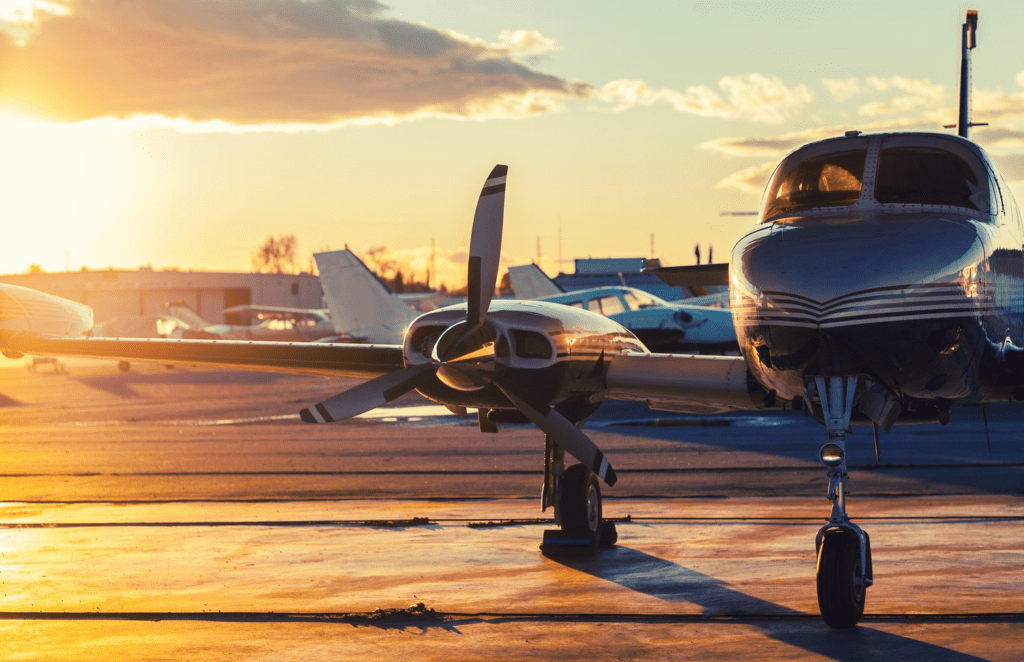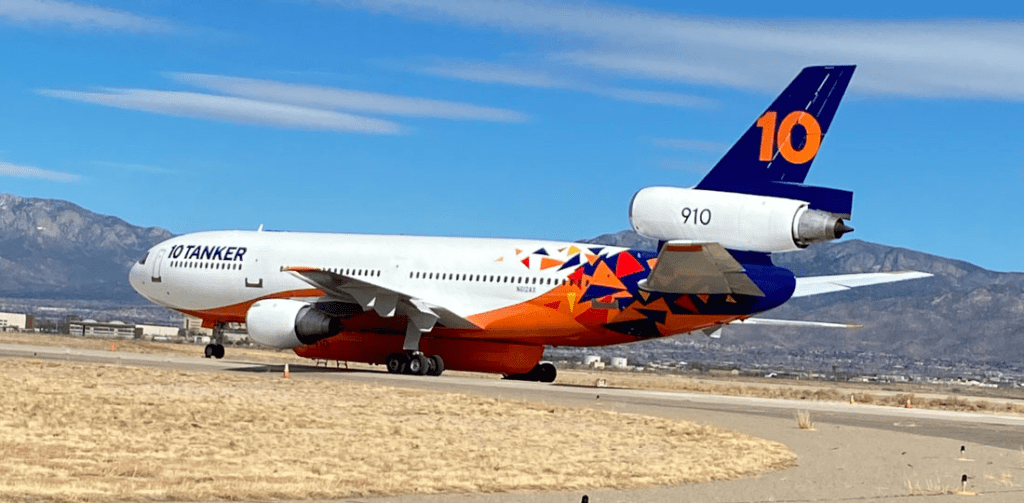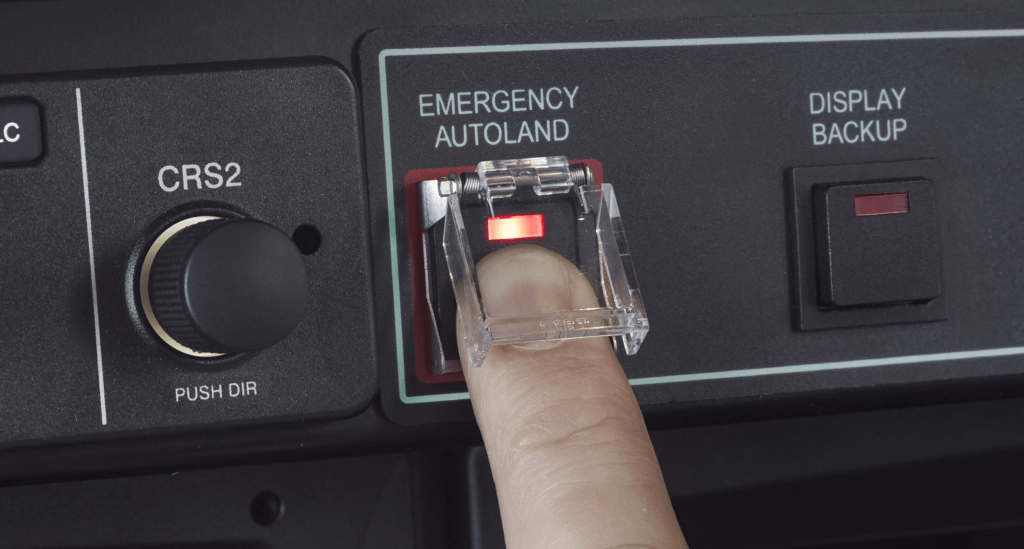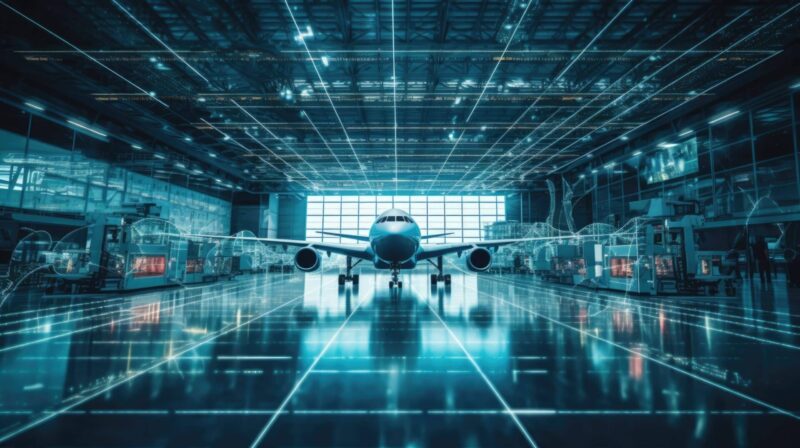Modern Civilian Flight Technology Advancements.

The aviation industry has had many modern civilian flight technology advancements and come a long way since the early days of general aviation (GA). Modern advancements in design, materials, propulsion, avionics, and safety systems have revolutionized civilian aircraft, making them safer, more efficient, and more accessible than ever.
This blog explores some of the most significant innovations in civilian aviation, covering everything from advanced wing designs and composite materials to glass cockpits, computer-controlled engines, and the emergence of groundbreaking systems like auto-land and ballistic parachutes.
Modern Civilian Flight Technology Advancements – Aircraft and Wing Design: The Foundation of Modern Flight
Advancements in Wing Design

The evolution of wing designs has played a pivotal role in improving aircraft efficiency, safety, and performance.
- High-Aspect Ratio Wings: Modern general aviation aircraft, like the Diamond DA62, feature high-aspect ratio wings, which reduce drag and improve fuel efficiency.
- Flaps and Leading-Edge Slats: These devices enable aircraft to achieve better control at lower speeds, making takeoffs and landings safer.
- Fowler Flaps: Extend rearward and downward to increase wing surface area and lift.
- Krueger Slats: Found on the leading edge, these enhance low-speed performance by optimizing airflow.
Laminar Flow Wings
Laminar flow technology minimizes turbulence over the wing, reducing drag and increasing fuel efficiency. Aircraft like the Cirrus SR22 and Pipistrel Panthera use laminar flow designs for enhanced performance.
Modern Civilian Flight Technology Advancements – Materials Revolution: Stronger, Lighter, and Safer
The Rise of Composites

Early aircraft relied on aluminum, but modern designs increasingly utilize composite materials such as carbon fiber and fiberglass.
- Strength-to-Weight Ratio: Composites are lighter and stronger than aluminum, improving fuel efficiency and durability.
- Corrosion Resistance: Unlike metal, composites don’t corrode, reducing maintenance requirements.
- Joystick / HOTAS – AMAZON.com
- Rudder Pedals – AMAZON.com
- Throttle Quadrant – AMAZON.com
- Gaming Chair – AMAZON.com
- VR Headset – AMAZON.com
Historical Note: The DC-10’s Adhesive Tail Section
Interestingly, the rear tail section of the McDonnell Douglas DC-10 was reportedly bonded with adhesives instead of traditional fasteners, showcasing early experimentation with alternative construction techniques. Although such methods had mixed success at the time, they paved the way for today’s advanced adhesive technologies used in modern composite structures.
Metal Alloys and 3D Printing

Advances in alloys and manufacturing techniques, like 3D printing, have further refined modern aircraft production. For instance, additive manufacturing allows for the creation of complex, lightweight parts that are difficult or impossible to achieve with traditional methods.
Modern Civilian Flight Technology Advancements – The Advent of Computer-Controlled Engines
Modern piston and turbine engines benefit from advanced digital systems that optimize performance and reliability.
Full Authority Digital Engine Control (FADEC)

FADEC systems revolutionize engine management by automating critical functions.
- Performance Optimization: FADEC continuously adjusts fuel flow, air intake, and other parameters for maximum efficiency.
- Ease of Operation: Pilots can focus on flying rather than managing complex engine settings.
- Reliability: Digital systems reduce human error and improve engine monitoring, leading to fewer mechanical failures.
Examples include the Lycoming iE2 engine and advanced turboprop systems in aircraft like the Pilatus PC-12.
Ballistic Parachute Systems: A Last-Resort Lifesaver

One of the most revolutionary safety features in general aviation is the advent of ballistic parachute systems.
What Is a Ballistic Parachute?
A ballistic parachute is an emergency system that deploys a parachute to safely lower the entire aircraft to the ground.
Notable Examples
- Cirrus Aircraft: The Cirrus Airframe Parachute System (CAPS) has become a standard feature in all Cirrus models. CAPS has saved over 250 lives since its introduction.
- Light Sport Aircraft (LSA): Many LSAs, such as the ICON A5, incorporate ballistic parachutes, making them ideal for recreational pilots seeking added peace of mind.
These systems are particularly beneficial for single-engine aircraft, where engine failures could otherwise be catastrophic.
Glass Cockpits: The Digital Revolution in Avionics

Modern avionics have transformed the cockpit experience, replacing traditional analog gauges with advanced digital displays.
Features of Glass Cockpits
- Integrated Flight Displays: Systems like the Garmin G1000 combine primary flight information (PFD) and navigation data into a single interface.
- Synthetic Vision Systems (SVS): SVS displays a 3D view of the terrain, enhancing situational awareness during poor visibility conditions.
- Real-Time Weather and Traffic: Pilots can access up-to-date weather data and monitor nearby aircraft, improving safety and decision-making.
Impact on General Aviation
- Cirrus SR22: Equipped with the Garmin Perspective+ system, the SR22 offers cutting-edge avionics tailored for safety and convenience.
- Cessna 172 Skyhawk: Modern versions feature glass cockpits, making advanced avionics accessible to student pilots.
Auto-Land Systems: When Pilots Can’t Fly
One of the most groundbreaking developments in civilian aviation is the introduction of autonomous landing systems.

What Is Auto-Land?
Auto-land systems allow an aircraft to land itself safely in case the pilot becomes incapacitated.
How It Works
- System Activation: A passenger or co-pilot can activate the system with the press of a button.
- Automation: The system calculates the nearest safe airport, communicates with air traffic control, and guides the aircraft to a safe landing.
- Passenger Interface: Simplified instructions on cockpit screens guide untrained passengers through the process.

Notable Examples
- Garmin Autoland: Featured in the Piper M600 and Cirrus Vision Jet, Garmin’s Autoland system is an industry leader.
- TBM 940: This high-performance turboprop also incorporates an Autoland system, offering peace of mind for single-pilot operations.
Implications for Safety
Auto-land systems represent a significant leap forward, ensuring that incapacitation no longer jeopardizes the safety of passengers or crew.
Modern Civilian Flight Technology Advancements – A Roundup of Modern Civilian Flight Technology

The advancements in civilian flight technology represent an extraordinary convergence of innovation across multiple disciplines.
- Wing and Aircraft Design: High-aspect ratio wings, advanced flap systems, and laminar flow technology improve efficiency and performance.
- Materials: Composites and 3D printing enable lighter, stronger, and more durable aircraft.
- Engines: Computer-controlled systems like FADEC enhance reliability and simplify operation.
- Safety Systems: Ballistic parachutes and auto-land technology save lives and provide peace of mind.
- Avionics: Glass cockpits and synthetic vision systems revolutionize situational awareness and ease of flight.
Looking Ahead
As technology continues to evolve, the future of civilian aviation will likely include greater automation, enhanced materials, and more efficient propulsion systems. Electric and hybrid engines, artificial intelligence, and even pilotless commercial flights could redefine the industry in the decades to come.
These advancements not only make aviation safer and more efficient but also bring the dream of flight within reach for more people than ever before.
- Latest CPU’s Available Now – Amazon.com
- Get a NEW GPU Best Performance – AMAZON.com
- Upgrade RAM Here today – AMAZON.com
- Prebuilt PC Options – AMAZON.com
Author

Brendon McAliece (Aka Gunnie) is a military veteran with 23 years working on Jet Fighters, their weapons systems and ejection seat/module systems as well as munitions and R&D. Involved with flight simulation since the 1980s, he has flown all the major flight simulators over the years.
He is an Australian expat who has lived in Malaysia, UK, Saudi Arabia and more recently Thailand. He is a multi-lingual blogger who loves to share his life experiences here on LetsFlyVFR.com and DreamingGuitar.com, with his lifestyle and Travel experiences Blog plus his Dreaming Coffee website.
Learn More @ DreamingGuitar.com – DreamingCoffee.com – LetsFlyVFR.com
( HOME – BLOG – SHOP – ABOUT )
As an Amazon affiliate I may benefit from qualifying sales.









